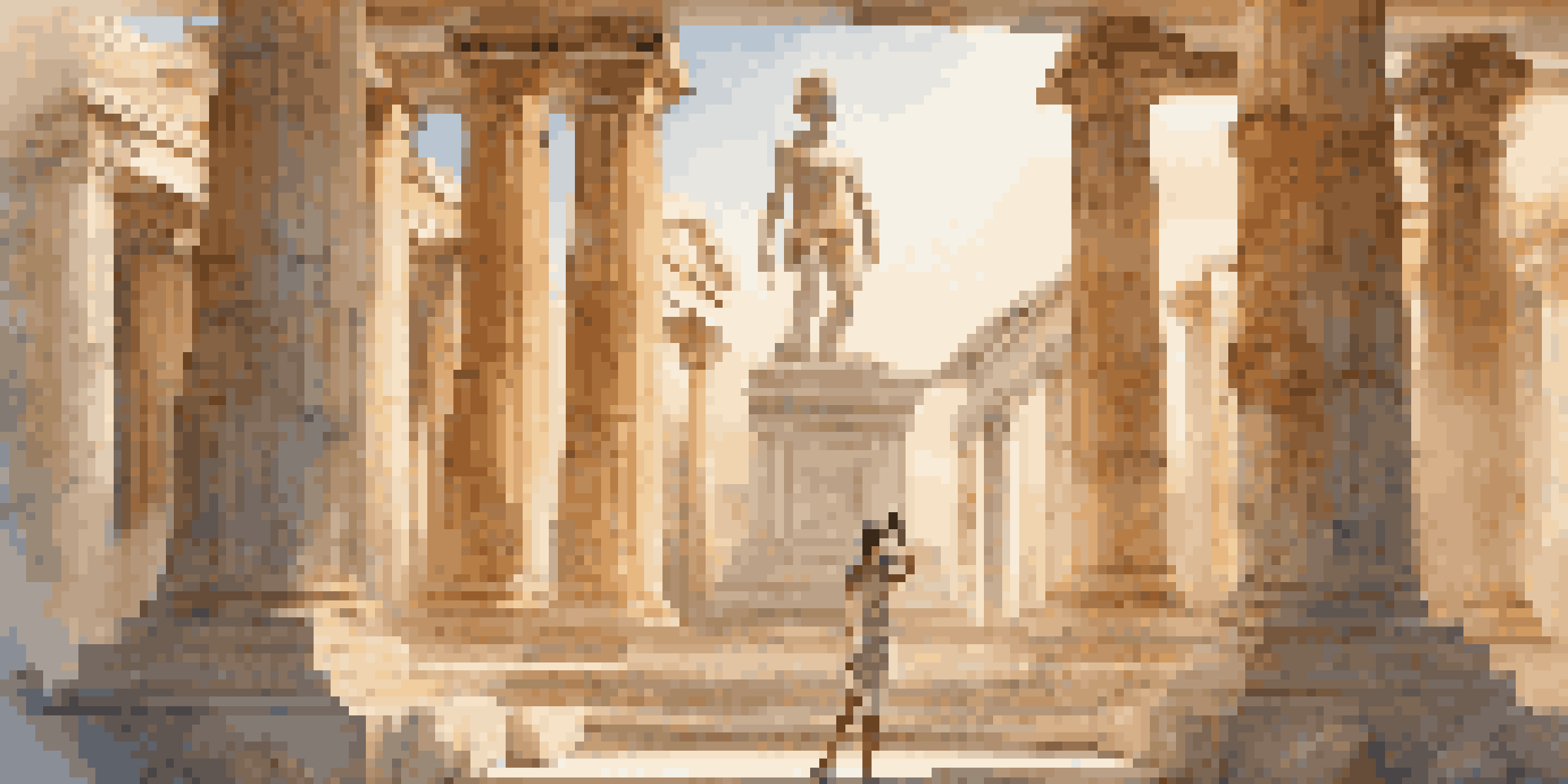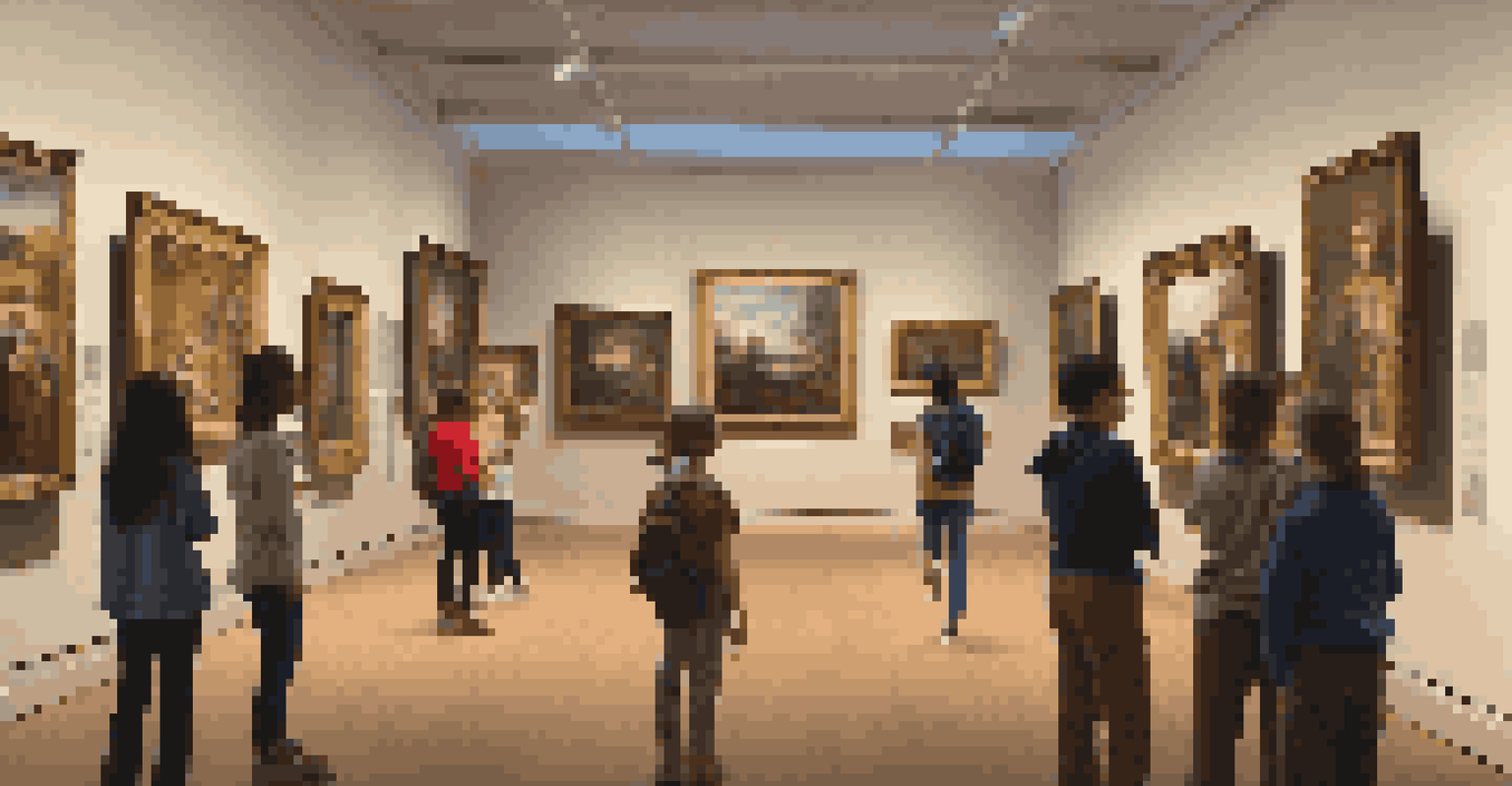Using VR to Recreate Historical Artworks and Contexts

What is Virtual Reality in Art Recreation?
Virtual reality (VR) is a technology that immerses users in a computer-generated environment, allowing them to interact with 3D spaces. In the world of art, this means recreating historical artworks and their surrounding contexts in a way that feels tangible and real. Imagine stepping into a painting or walking through an ancient site; that’s the power of VR.
Virtual reality is the ultimate empathy machine.
By leveraging VR, artists and historians can transport viewers to past eras, offering an experience that goes beyond traditional viewing. This immersive experience allows for a deeper understanding of the artwork's significance and its historical setting. As a result, users can engage with art in ways that were previously unimaginable.
Not only does this technology enhance appreciation for art, but it also educates users about the social and cultural backdrop of the time. The combination of interactivity and historical context creates a rich learning environment that encourages exploration and curiosity.
The Benefits of VR in Art Preservation
One of the most significant advantages of using VR in art recreation is its ability to preserve artworks that might be deteriorating or at risk. For instance, VR can capture intricate details of a masterpiece, ensuring that its beauty is documented for future generations. This digital preservation acts as a safeguard against the ravages of time.

Additionally, VR offers a way to share art with wider audiences who may not have access to physical locations. Imagine being able to view the Sistine Chapel from your living room or explore the ruins of Pompeii without the need for travel. This accessibility not only democratizes art but also fosters a greater appreciation for global heritage.
VR Transforms Art Interaction
Virtual reality allows users to immerse themselves in historical artworks and their contexts, enhancing understanding and appreciation.
Moreover, VR can simulate environments that no longer exist, allowing users to experience the art in its original context. For example, viewers can wander through a restored version of an ancient Greek temple while admiring the sculptures that once adorned it, creating a holistic understanding of the artwork.
Creating Engaging Educational Experiences with VR
VR technology has revolutionized the way educational institutions teach art history. By incorporating VR into their curriculum, schools can offer immersive experiences where students can interact directly with historical artworks. This hands-on approach makes learning more engaging and memorable.
Art is a lie that enables us to realize the truth.
For example, students can participate in guided tours of historic sites or virtual museums, where they can ask questions and receive immediate feedback in real-time. This interactive element keeps students invested in the subject matter and encourages critical thinking about the art and its context.
Furthermore, VR can cater to different learning styles, providing visual, auditory, and kinesthetic experiences. Whether a student learns best through seeing, hearing, or doing, VR has the potential to address all these preferences, making art history accessible to everyone.
VR as a Tool for Artists and Creatives
Artists themselves can benefit from VR technology by using it as a medium for their own creations. VR allows artists to experiment with space and form in ways that traditional materials cannot. Imagine sculpting a statue in a virtual environment where you can manipulate its dimensions and lighting instantly.
This innovative approach not only expands the boundaries of artistic expression but also fosters collaboration among artists. They can share virtual spaces, work together on projects, and even showcase their work to global audiences without geographical limitations.
Preserving Art for Future Generations
VR technology enables the preservation of deteriorating artworks and makes them accessible to a broader audience worldwide.
Moreover, artists can use VR to recreate historical techniques, allowing them to learn from the masters while adding their unique twist. This blend of old and new can lead to a fresh wave of creativity that respects tradition while pushing artistic boundaries.
Challenges and Limitations of VR in Art Recreation
Despite its many benefits, there are challenges associated with using VR for art recreation. One major limitation is the accessibility of the technology itself; not everyone has the means to invest in high-quality VR equipment. This can create a divide between those who can experience VR and those who cannot.
Additionally, creating accurate VR representations of artworks requires significant time and expertise. Artists and developers must work closely to ensure that the virtual versions do justice to the originals, which can be a complex and resource-intensive process.
Moreover, there's the risk of oversimplification; if the VR experience is not well-designed, it may fail to convey the depth and nuances of the original artwork. It’s essential to strike a balance between interactivity and authenticity to maintain the integrity of the historical context.
Real-World Examples of VR in Art Recreation
Several institutions have begun to embrace VR as a method for art recreation. For instance, The British Museum has created virtual tours that allow users to explore its vast collection from anywhere in the world. This initiative not only showcases their artifacts but also provides contextual information that enriches the viewing experience.
Another example is the 'Vatican Museums VR' project, which offers visitors a chance to explore the Sistine Chapel and other significant areas virtually. This immersive experience has been praised for its ability to recreate the awe-inspiring atmosphere of the actual location, making art history accessible to a broader audience.
Innovative Educational Tool
By integrating VR into art education, institutions can create engaging, interactive experiences that cater to diverse learning styles.
These projects illustrate how VR can serve as a bridge between the past and present, allowing us to engage with history in transformative ways. As more institutions adopt this technology, we can expect to see even more innovative applications in the world of art.
The Future of VR in Art and History
Looking ahead, the potential for VR in the realms of art and history is vast and exciting. As technology continues to advance, we can expect even more realistic and immersive experiences that further blur the lines between the virtual and physical worlds. Imagine walking through a digitally recreated ancient city as if it were alive.
Moreover, the integration of artificial intelligence with VR could enhance user experiences further. AI could tailor the virtual experience to individual preferences, providing personalized tours or highlighting specific aspects of an artwork based on user interest.

As we continue to explore these possibilities, one thing is clear: VR is not just a passing trend; it’s a transformative tool that could redefine our understanding and appreciation of art and history for generations to come.